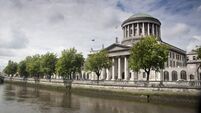Waterford residents win appeal over stay on order that wind turbines be put into standby mode

Local residents have won, "in principle", their Supreme Court appeal over a stay on an order requiring a Waterford windfarm operator to put nine turbines into "standby" mode.
The High Court had previously found they were not built in line with planning permission and required an environmental impact assessment.











